The “I” Has It: Talking the Present and Future of Image and Comics with Eric Stephenson
Generally speaking, I really enjoy interviews. You can learn a lot from people out there if you just ask. And while a lot of people give good interviews, some stand out even amidst the best. One of those people is Image Comics Publisher Eric Stephenson. I’ve interviewed him many times over the years and every time we chat, his answers are honest, thoughtful and full of insight. And so whenever I’m given the chance to chat with him, I do that.
And with 2016 kicking off and a lot of questions swirling about what the year is going to be like in comics, we set up a chat to talk about what’s going on. Today, you can read our discussion about Image’s strategy, who they’re targeting with their books, his candidness about the industry and its leaders, the role some of Image’s new staff have taken up, the volume of books they’re releasing, finding outside-the-box (and typical format) projects, digital comics the comic industry’s obsession with recency and much more. It’s a great chat – as per usual – and it provides a lot of insight into his and Image’s vision for the comic industry.
Give it a read, and come back tomorrow for more perspective from Stephenson (and many others) in this week’s longform piece.
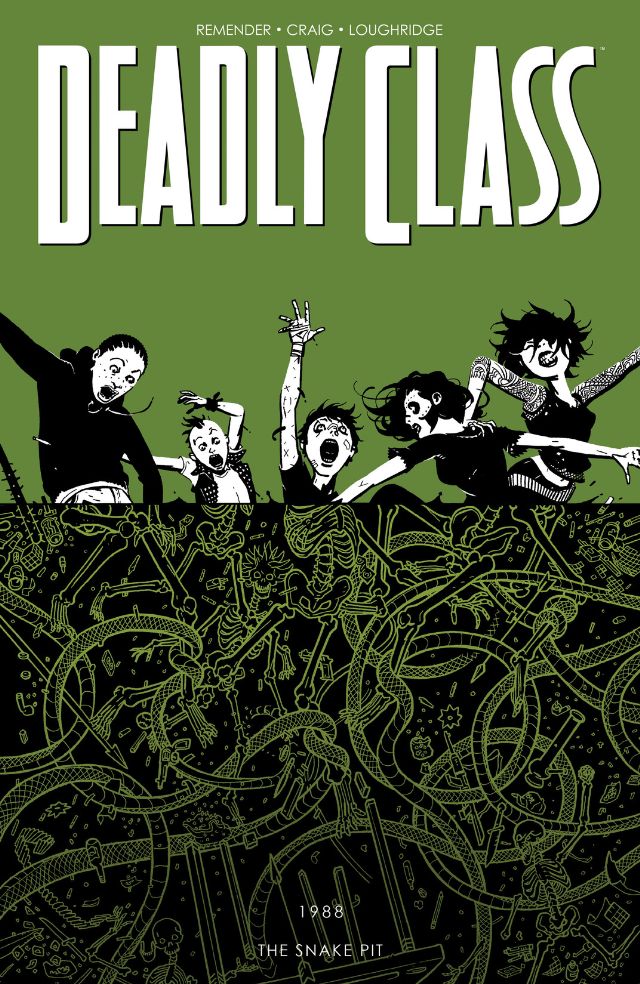
In a recent interview, you said Image’s goal is to go after actual readers, rather than boosting orders through other means. And a lot of the shops I’ve talked with have touted a bevy of Image’s titles as sell-through – sales actually to readers – champions despite being third in overall orders. So it seems like your goal is being realized to a degree. Do you see Image’s growth strategy as more of a long game? And that building through quality and proof of product is more sustainable overall?
ES: The only way to grow the business is through readers. Collectors are fickle, and no business can plan on long-term survival by catering to that piece of the market. Certainly, there is always going to be an aspect of collectibility to what we do in comics, but what’s hot today is not necessarily hot tomorrow and chasing trends does not build a better industry. The downside to that is growth isn’t always quick. Everyone wants everything now. I’m no stranger to that feeling — Corey or Kat or Robert will all tell you there are days I get frustrated with our own rate of progress — but something I’ve learned over time is that patience always wins out. We don’t want to go the route of sports cards or Beanie Babies or whatever. We — and I mean the whole comics industry “we” here — want to be around for decades to come. That’s not an achievable goal if we’re just going to focus on short term gains.
One thing that seems to happen when you talk about Image is it comes back to your thoughts on what everyone else is doing, specifically Marvel and DC, rather than just what Image is doing. It happens in interviews and your keynotes at Image Expo. Why is that? Is it just impossible to separate Image’s performance from what everyone else in the industry is doing?
ES: Well, we don’t exist in a vacuum, obviously, and I would personally argue that you can’t have a candid conversation about the comics industry as a whole, let alone any one company’s performance, without acknowledging the effect Marvel and DC have on the marketplace. They are referred to as “the Big Two” for a reason: they have more market share than any other publisher, or even every other publisher combined, and their business decisions affect us all. People complain about the fact there is a single distributor and that is entirely the result of Marvel’s decision during the 1990s to buy Heroes World. We are still living with the ramifications of that decision today. So when I talk about things I feel Marvel or DC are doing wrong — and with an eye toward this June, I think they’re being incredibly irresponsible with how they’re presently positioning themselves within the marketplace — it’s not as simple as just comparing Image with them or whatever. I’m looking at what they’re doing and what it means for the future of our business.
I think that’s the part many don’t realize when it comes to that last question: there’s a real opportunity cost to the retail side of things. Ordering more of book X from publisher Y means shops order less of publisher Z. In related fashion, when publisher Y’s books perform far below expectations, that’s a weight on the shop that could lead to some dark places – even closure. That impacts everyone. So when the average fan or even fellow publisher employee sees you saying those things, they may think you’re just being petty. It seems to me, that you’re not complaining as much as you’re looking out there and seeing a lack of responsibility by others that affects everyone in comics, including Image. Fair statement?
ES: Yeah, it’s not really a case of complaining, or rather, if I am complaining, it’s actually coming from the best of all possible places. I love comics, and I want the industry to be healthy and strong, and yes — what one publisher does absolutely affects everyone else in this business. Heroes World is one example, but following through on what you’re saying — back in the ‘90s, there were stores that closed because publisher Y’s books performed below expectations. People went nuts for the Death of Superman, but when DC inevitably resurrected the character, that didn’t have the same appeal. Stores went big on that and the market suffered as a result. All publishers engaged in the gimmick craze of the ‘90s, and it hurt the market. Responsibility is key, I think, and that’s what’s missing with a lot of this stuff. That’s what makes me concerned for the future. Constantly relaunching and renumbering books is going to eventually inoculate readers to the very concept of first issues — no one is going to care after a while. I don’t think that’s what any of us want. It makes it hard for all of us to do what we go into this business to do: make good comics.
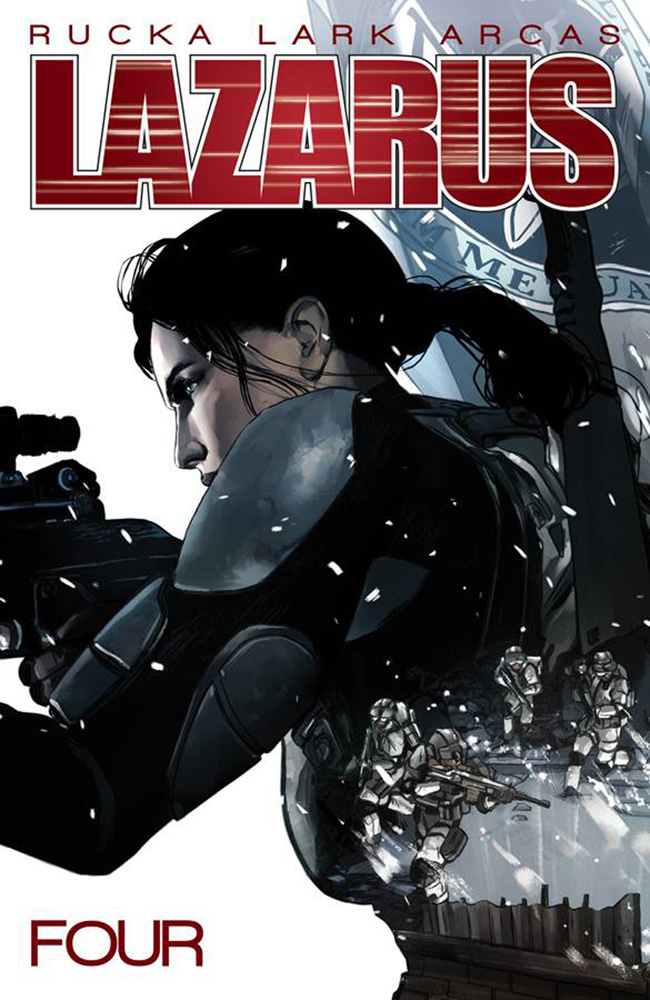
I’ve interviewed you many a time before, and one thing that I could never accuse you of being guilty of is using marketing speak instead of just being honest. As the person at the head of the largest independent comic publisher in the US, do you think it’s important to be transparent and honest to readers and customers (so to speak) in an era where many go the other route?
ES: I do. Some people say it’s shitty, and you know, it isn’t something that wins me a lot of friends amongst other publishers. Plenty of people read what I have to say and think, “Well, that guy’s a fucking massive dick.” But it’s not like I’m going to lie. And there’s not really any point in keeping quiet about what I perceive as problems that affect us all. It’s a little frustrating at times because none of this is really new — it’s not like I’m uncovering new truths every time I bring some of this stuff up — but here we are, having the same conversations and 2015 really was not a banner year for comics as a whole. 2016 is likely to be worse. I don’t take any glee in saying that, I promise, but it’s my opinion that somebody has to. Writers, artists, retailers — there are a lot of nervous people out there right now. They’ve been to shops with stacks of unsold first issues from some of these needless relaunches, or they work in those shops or they own them, and they know that is not a sign of good things to come.
You briefly mentioned Corey Murphy above. She’s the Director of Sales and has been with Image for a year and a half now, and she’s smart as hell. Jeff Boison also signed on late in 2015 as your Director of Publishing Planning & Book Trade Sales, and he has a lot of experience in a similar role elsewhere. Those two seem like really important parts of the Image team, especially given the importance of outreach. What are their roles, and how essential is it for Image to have smart people tuned into those specific sides of the business?
ES: Corey is smart as hell, and working with her, along with our marketing director Kat Salazar, has been one of the highlights of the last year. Bringing Boison on has been great as well. He came well-recommended from a number of creators who’d worked with him before, and just in the few months he’s been working here he’s had a tremendous impact on our book trade business. Both he and Corey have been pretty instrumental in driving home the importance of adhering to a schedule with creators, both in terms of single issues and trades, and I think we’re better served in terms of our outreach to our main two markets than we’ve ever been. Having the right people in the right jobs is essential, and with both of them — Corey was managing multiple Direct Market stores; Boison worked at Random House before he was at DC — they have a wealth of experience to draw from and they back up all their recommendations with facts or with solid analysis.
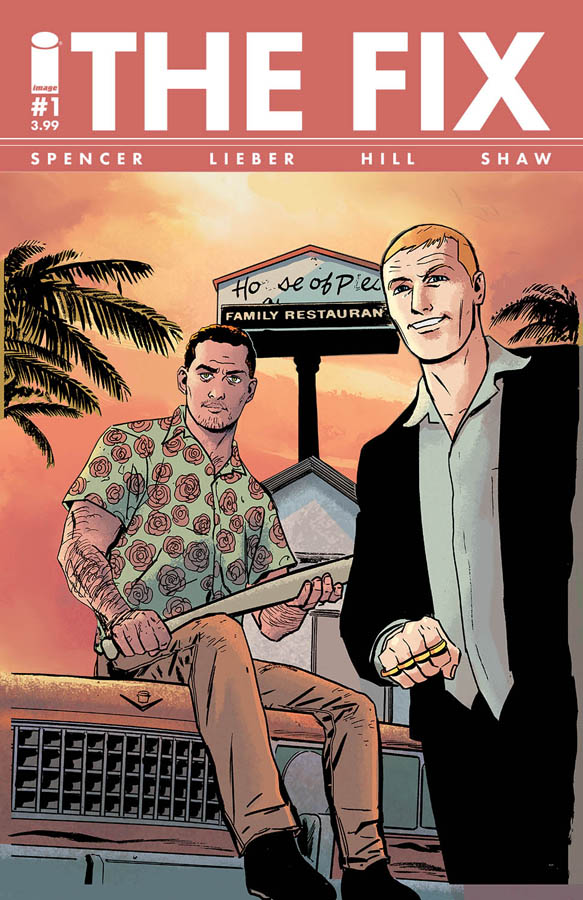
We don’t always agree on everything, but honestly, I think that’s good. It’s important to have people on your team who aren’t afraid to give you bad news or tell you something you don’t want to hear. Someone to challenge preconceived notions that maybe weren’t based on the best information. Having someone who can clearly outline the things that need to be done to get maximum exposure in the book market, and who speaks the same language as the people placing orders, is incredibly important. Having someone in charge of Direct Market sales who has actually placed orders, who has been on the shop floor hand selling and interacting with customers, who has managed inventory — that’s extremely valuable.
Same goes for people like Kat — she was at a book publisher before working in comics and beyond navigating the comics press, she knows what it takes to get mainstream attention. We’d never had a multi-page article in Entertainment Weekly before, or anything like getting Kelly Sue DeConnick in Vanity Fair or getting Katie Couric to speak with her. I’ve said this before, but it can’t be overstated: Image has an amazing staff right now. Everybody here is doing a fantastic job — they all bring something unique to what they do. I get so many compliments about our staff, and I think the speaks more to your point than anything I could say. There’s just no substitute for the right people.
I know Corey talks to retailers a lot. It’s a big part of her job. I’ve spoken to a lot as well, and one recurring theme from many I’ve spoken to is that there are too many comics being produced today in their minds. That’s not an Image specific statement, but it’s certainly something that impacts you for some of the reasons we’ve already discussed. And with the success and growing reputation Image has, I’m sure you’re getting more pitches than ever. How do you balance that? Or is keeping your release list down not a significant concern for you?
ES: It is a concern, actually. And if you look at our offerings from around December 2015 on, the number of titles we’ve been soliciting each month has decreased. There are too many comics being produced today, by everyone, and it’s maddening for both retailers and fans alike. For retailers, there are simply too many titles to keep up with in terms of trying to suss out what it’s all about, and for any reader trying to check out as many different things as possible, it becomes a budgetary issue at some point. So yeah, that’s something we’ve taken into account on our end, and we’re being a bit more selective with what is being approved going forward. There are more than plenty of superhero comics at this point, and the same goes for sci-fi, horror, and crime. As an industry, our future success is really going to be determined by our collective ability to surprise and subvert. People know we can endlessly reshuffle the same half dozen genres around ad infinitum — it’s time for us to show them what else we can do.
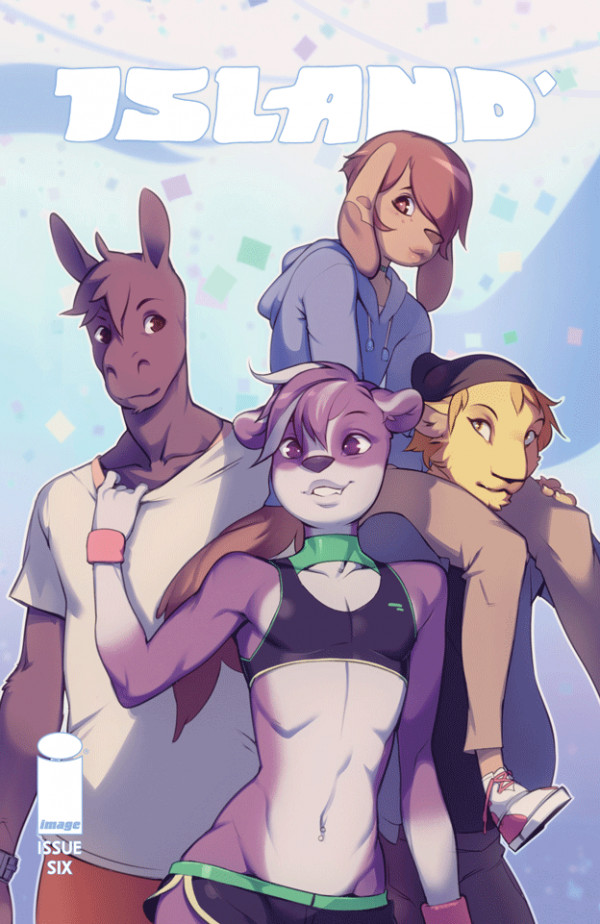
Obviously the readership in comics is evolving, even within the existing reader base. What they want to read and how they want to read is changing to a degree. And one thing I’ve noticed is how Image has started to publish more books that are outside of just the typical monthly comic look and feel. Brandon Graham and Emma Rios’ Island is a great example, but Camp Midnight and Hinges are graphic novels Image is publishing, and Otis Frampton’s Oddly Normal has switched to that format as well after initially being released in single issues. Is Image actively looking to find projects outside of the norm for comics like those, or was it more of a situation where the opportunity presented themselves?
ES: Yes. One of Image’s strengths over the years has been that we don’t look quite the same from one year to the next, and I’m pretty proud of the fact that if you look at the books we were putting out in 2008 when I became Publisher and compare them to what we’re doing now, there’s a vast difference. In some cases, it’s almost like a different company. It may not always seem to be the case, but that level of reinvention is kind of always the goal. If we — Image, other publishers, the industry — want to remain vital in the year ahead, we have to continue doing new things and trying things that aren’t quite mainstream. Or mainstream yet, as the case may be. So it’s a case of seeking that sort of thing out, but there’s a bit of happenstance, too. Meredith McLaren was referred to us by another creator. Otis was a submission. With Brandon, Emma, and Steven, we were already doing books with them, so their projects were the continuation of that, but with each of them wanting to do something a little different.
Speaking of that evolving audience, it feels that overall, the digital side of comic sales has either flattened, or it isn’t growing at the same meteoric rate as it once was. Image seems like a perfect fit for that audience, though. What have you seen? Are you seeing that side of the business continue to grow alongside the direct and book markets?
ES: Your assessment is fairly accurate. Things have been mostly flat the last couple years. I think ComiXology does a fine job, but it does seem like the audience is kind of holding steady at this point. We’ve seen more pronounced growth in print.
You’ve answered a whole lot of questions lately about the lateness of Image books, and that’s a subject everyone agrees is an important one due to how it impacts readership. I know that’s something you and your team have been working to get locked down. Given the workload of publishing a comic, it seems like the goal is less to get books on a true monthly schedule, and more on a predictable schedule like Saga has been implementing since launch. Is that the objective, really? Is it more of a focus on giving retailers and bookstores a pattern they can expect releases at rather than a schedule that might be unrealistic for the average creative team?
ES: Well, here’s the thing. If you can’t get 12 issues out a year, then you should be honest about it. Don’t solicit 12 issues and then ship 10. Or eight. The thing we’ve been doing is looking at what’s realistic and building scheduling around that. That doesn’t mean everything needs to ship on that schedule. Some books obviously do just fine coming out monthly. Maintaining a set schedule with planned breaks is beneficial to readers and to retailers, whereas just showing up late pisses everyone off. And aside from the simple benefit of letting readers know what to expect in terms of monthly comics, there’s a direct benefit to how trades are distributed to bookstores. In the past, there’s been some lag time between when things show up in comic book shops and when they’re in bookstores, and getting everything on schedule is going to help eliminate that.
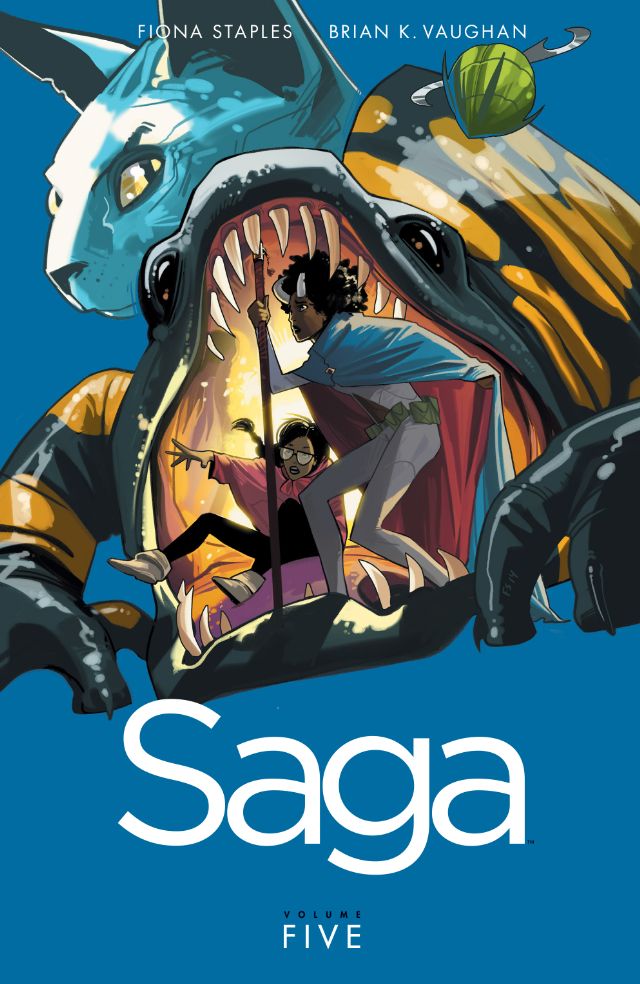
What happened with Saga was Brian and Fiona just didn’t want to do the every single month thing. Not because they couldn’t, but because they didn’t want to — it was more a question of structuring things so as not to compromise the level of craft going into each issue. When we first talked about it, I was a little skeptical, but Brian made the point that there’s no reason we have to just grind out 12 issues a year just because that’s how it’s always been done. We can do whatever we want. And that’s the truth. There’s no one way of putting out a comic book series, and what Brian and Fiona taught us with how they handled the schedule on Saga is that if you’re upfront with people about the time off, about the break points, they’re fine with it. More information is always better.
I’m working on an article on the obsession comics has with recency. What’s hot is typically what’s new these days. In fact, many books have a hard time past the first trade. It’s gotten so bad that in January 2016’s top 200 comics, two Image titles were in the top 5 for highest numbered comics, and Saga had the 19th highest number at issue #33. That’s insane. Why do you think that is? And beyond that, have you found that the stories being pitched to you are changing as a reflection of how much attention the “new” receives over long running stories these days?
ES: Not at all. By and large, most of the pitches I get are for ongoing series. Writers and artists want to do books that last for a while, that stick around. There are definitely some creators who want to do short, finite stories, but that’s not really the norm. And it’s frustrating, because there are readers who will wait for the trade paperback collection or whatever, and what’s happening there is they’re essentially killing any prospect a book has of going on. A series can’t last if everybody jumps ship from the monthlies and decides they’re going to wait for the trade. There will be one or two trades and then the series will end. Generally speaking, creators need that income from the monthlies to keep things going, and it’s simply not realistic for everyone to switch to doing series of graphics novels. Banking material for a hundred something page book takes months, and due to the costs involved, it typically takes longer for a trade to earn out, and that’s not even taking into account the fact that everything sold through the book market is 100% returnable. For creator-owned or self-published comics, for comics from smaller publishers actually focused on comics — there isn’t a corporate safety net there for this stuff. There isn’t a Disney or a Warner Bros. using the comics as an incubator for movie and TV ideas. It’s comics created by men and women who, by and large, are telling the kinds of stories they want to tell, the way they want to tell them, and their efforts are being stymied somewhat by this wait for the trade mentality.
You’re right, though, there’s this obsession with first issues and what’s new that is really puzzling, especially since, if you’re just looking at it in collector terms, the first issue of a long-running series is ultimately going to be worth more than the first issue of something that isn’t around very long. It’s more short-term thinking, really — buy a first issue, flip it for as much as possible as quickly as possible. These are people who look at comics as investments, but they’re basically undermining the longterm value of the comics they invest in by only focusing on the first issues. The most valuable first issues are attached to series or characters that have staying power. But then you’ve also got Marvel and DC relaunching their books over and over again, and as I was saying, it just kind of reduces the impact of a first issue. There were two Howard the Duck number ones last year! Howard the Duck was relaunched before there were even 10 issues out! Then you look at how the numbers settle on the books after they’ve been relaunched and renumbered, and it’s just crystal clear there is no benefit to ongoing sales. The readership does not grow. It’s a formula that doesn’t work, but they go back to it again and again and again. At some point, they’re going to wear down even their most loyal fans.
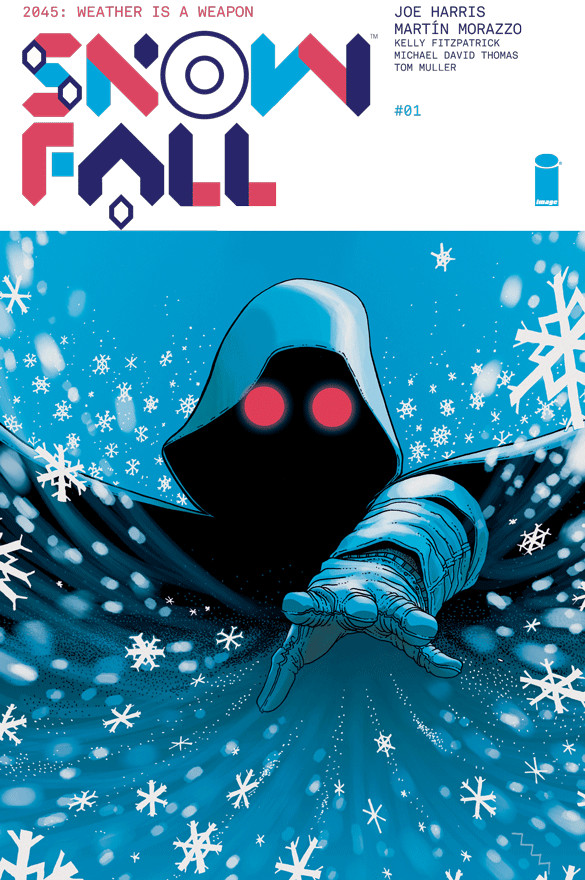
There’s a lot of doom and gloom out there as far as what kind of year 2016 could be for the comic industry, and it’s easy to see why. But for you and Image, what’s your vision of the future? Not to steal the thunder of any future keynote speeches or anything, but do you feel positioned to have a strong year overall?
ES: My vision of the future centers largely around a comics industry that isn’t beholden to any single publisher. There really shouldn’t be a big two or a big three or even a big four. There’s room for everyone to succeed, and honestly, I think there’s more value to being number one when it’s an actual competition than when everything is weighted so heavily in one direction. The industry as a whole would be better off if there were multiple successful publishers jockeying for that top spot at any given time, not because one of them has any particular advantage, but because of the quality of the work. We shouldn’t be in a position where the loss of one major publisher could potentially cripple the entire industry, but that’s the position the Direct Market is in right now. My hope is that whatever bad vibes are in the air right now, we’re going to finally start moving away from that.
There’s a song lyric I’m very fond of — “the past is knowledge, the present our mistake, and the future we always leave too late” — and I think it’s very applicable to our business. There’s just too much short-term thinking, and building a better tomorrow is constantly being put off in favor of staying afloat today. At a certain point, it just seems like staying afloat has become a goal in and of itself. There needs to be more, and that’s where we’re at right now. We know we can be doing more, and we want to be doing more, not quantity-wise or even just in terms of quality, but in terms of shaping how comics look in the future — and that includes everything from the kind of books we’re publishing to who creates them and who reads them. The best way for us to position ourselves for a strong 2016 is just look at it as another stepping stone toward the future. Everyone involved this business should be looking at this year that way, really.
